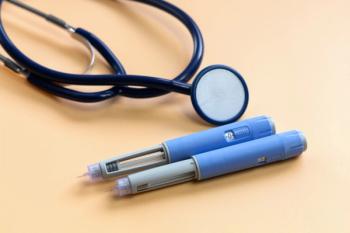
Assessing Trends, Challenges in Oral Cancer Drug Dispensing
Jim Schwartz, RPh, executive director of pharmacy operations for Oncology Pharmacy Services, discusses his presentation at the Community Oncology Alliance 2022 conference on the new world of oral cancer drug dispensing.
Pharmacy Times interviewed Jim Schwartz, RPh, executive director of pharmacy operations for Oncology Pharmacy Services, discusses his presentation at the Community Oncology Alliance 2022 conference on the new world of oral cancer drug dispensing for pharmacy.
Question: How has the pandemic shifted the world of oral cancer drug dispensing?
Jim Schwartz: The effect of the pandemic on oral chemotherapy, in terms of what is prescribed, is not changed, because all our treatments are based on pathways. So, what's the most effective, what's least toxic, what's easiest for the patient to take, which drugs and how often they're prescribed is about the same?
But with the pandemic, we don't want patients coming in if they don't have to. Doctors are doing a lot more telemedicine. On the other side, we're doing more telepharmacy, where we can speak and it's always better to talk to somebody directly.
I mean, it's not directly, but you can see them, and they can see you. It gives us better results to get feedback. You can see a patient, ask them specific questions about side effects, things like that, so it's just like everything else; it's all virtual.
Now, people are starting to come out more to the clinic, but where we don't have to have patients in the clinic. That’s why it's not just oral drugs, but anything given to the clinic. In terms of the oral drugs, they're still prescribed at about the same frequency, just doing a more virtual follow up on the patient to make sure they're taking it, they're feeling okay, and everything's going okay.
Question: What are some trends in oral cancer drug dispensing in 2022?
Jim Schwartz: In 2022, well, it's been going on for a while, but it's going to increase more targeted therapies. Some of the oral drugs, like traditional chemotherapy, is something that's just like a shotgun approach. You're just killing cells that are dividing. This is more targeted to specific mutations, to specific biomarkers, and there's more of those that are being developed and more of those that are that are already out there.
So, it just seems like there's a flood sometimes of new drugs, as many oral is not, I think 35% or 40% of the drugs that are in trials right now are oral, and they're going to keep coming in, and more than not, or like I said, targeted agents that are specific. That tells you, once you've done the genomic testing, this drug will work or it won't work, and that's a big deal, because you don't want to give people drugs that don't work. That’s something new and in oncology, and it's especially true in oral oncology.
Question: What are some of the challenges pharmacies faces in oral cancer drug dispensing, and what are some potential solutions to those challenges for pharmacies?
Jim Schwartz: Well, some of the challenges we face, and let's start with the patient, because oral adherence is always an issue. When you give somebody drug in the clinic they got it, and its over time doctors have become more comfortable with the fact that, “okay, it's oral chemotherapy, they need to take it.”
But we, as a practice, pharmacists, nurses, IPPS, doctors, have to work more collaboratively to make sure that the patients are taking the drug or taking it appropriately, or not exhibiting any side effects. Because once you've gotten over the issue of the cost of the drug, because they're rarely cheap, but we take care of that issue, I’ll talk about that.
Its side effects are the second reason for them not to take it, and if you're following them regularly, especially during the first 4 to 6 weeks of treatment, things will start to develop and if you catch it early enough, you can treat the side effects. You can dose reduce because if the patients just get too far gone, they'll just stop taking it, and they don't always tell you. Adherence is the biggest thing we can do.
Right up front is making sure that they're able to afford it. These drugs are expensive, we use as much as we can. Almost all the pharmacy companies are very good at providing co-pay cards where the co-pay is less than $50.
For commercial patients, for Medicare, it can be more difficult. We have to find foundation money. We have a staff that looks diligently to find that money for the patients. Some are better than others. There's prostate, there's lung, there's breast, it just depends on whether there's money in there or not, but we make sure that the patients always can afford their drug, and when we can't find money, we get free drugs, so about 25% of our patients that are on oral chemotherapy, get free drugs, but that doesn't mean we don't just keep looking for foundations.
If they're on free drugs, and we found a foundation open that fits them, we move them over. We're not just taking the manufacturers’ drug away from them, but somebody else can use that.
In terms of filling prescriptions, we talked about the rate of patients not picking up prescriptions. We have less than 1% rate of drugs failed and not picked up. I think the other specialty pharmacies reporting went from 20 to 30%.
They just don't look for financial resources. Those are the biggest reasons for financial toxicity and side effect toxicity.
So those are the biggest challenges to us, and it's helpful to work with not just the doctors, but the nurses and APS, because the patient will eventually tell 1 of us, “I'm developing a rash, I'm having diarrhea,” something like that.
That means we know, and we can do something about it right in a wide array. So that's the challenge we faced for most on the patient side.
Newsletter
Stay informed on drug updates, treatment guidelines, and pharmacy practice trends—subscribe to Pharmacy Times for weekly clinical insights.




















































































































































































































